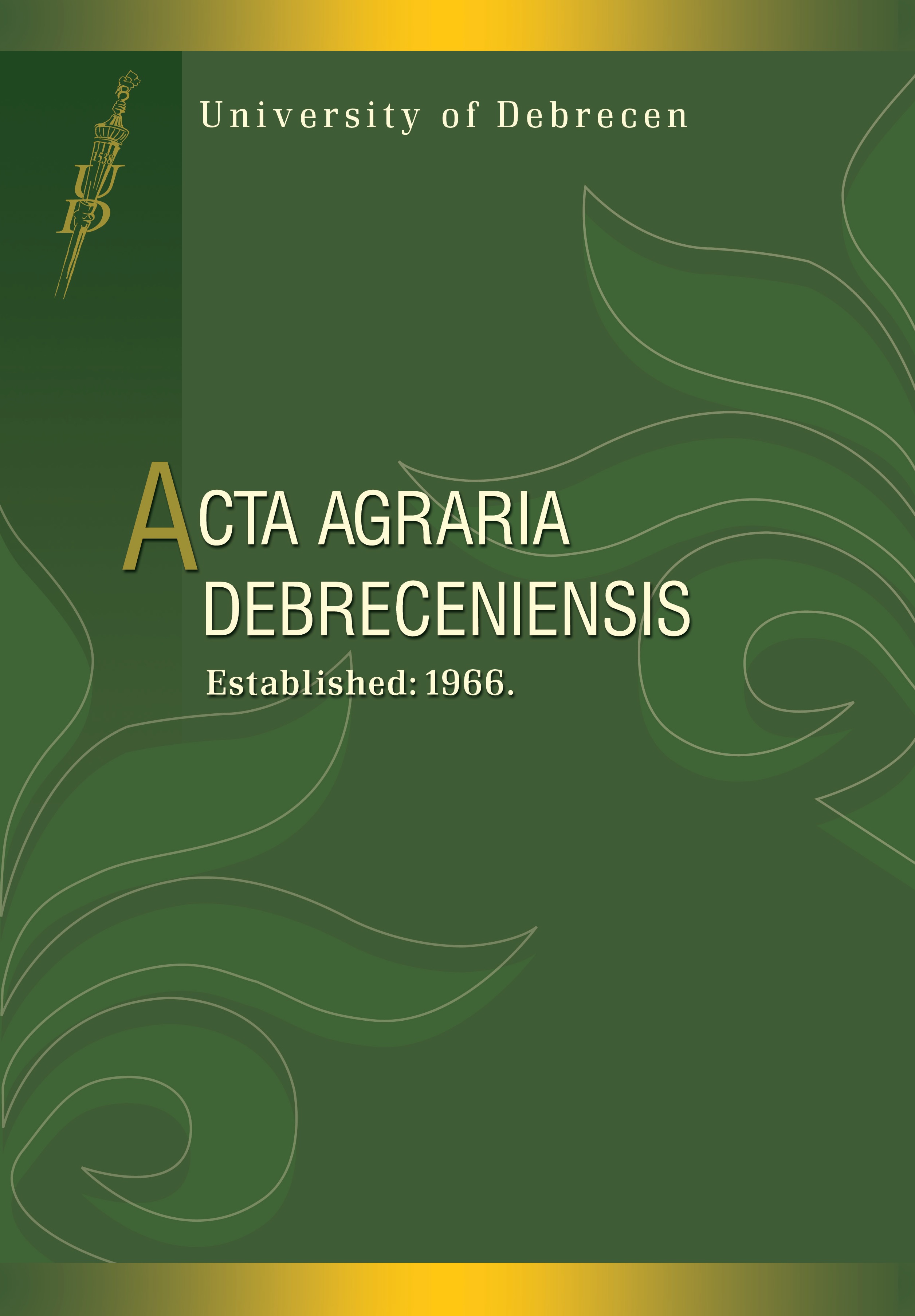Study on the weeds of maize in the infected field with Cirsium arvense (l.) scop.
Authors
View
Keywords
How To Cite
Abstract
The aim of our research was to establish the difference between the weed flora of maize hybrids sown in different times. Our field trial has been performed nearby Szombathely on a field of an agricultural farm, where two different hybrids were grown. The cold tolerant hybrid was sown at the end of March; the traditional hybrid was sown at the end of April. During the vegetation weed survey was conducted on 4–4 model parcels at two times in case of both hybrids. Cirsium arvense gave the largest weed cover in both hybrids. In cold tolerant hybrid gave 4.53%, in the traditional hybrid gave 56.63% weed cover. Considering the number of shoots per square meter C. arvense was also dominant with 64 plant m-2 density in early sown maize and 49.5 plant m-2 in traditional maize hybrid. At the time of the second weed survey the number of weeds increased significantly. The shoot number of C. arvense in cold tolerant hybrid was almost one and a half times more than at the first evaluation, while in case of the traditional hybrid it is nearly doubled. According to the weed density assessment there were differences between the two hybrids in the rate of G3 and T4 weeds. In early sown maize hybrid (MT Milo) this rate was 50–50% while in traditional hybrid was 90–10%. On 26th June the density of the weeds in the cold tolerant hybrid was two times higher than in the traditional one (Kamelias). Based on the experimental results it can be stated that the effective weed control in cold tolerant, early sowing maize hybrids is very important too.

 https://doi.org/10.34101/actaagrar/51/2077
https://doi.org/10.34101/actaagrar/51/2077